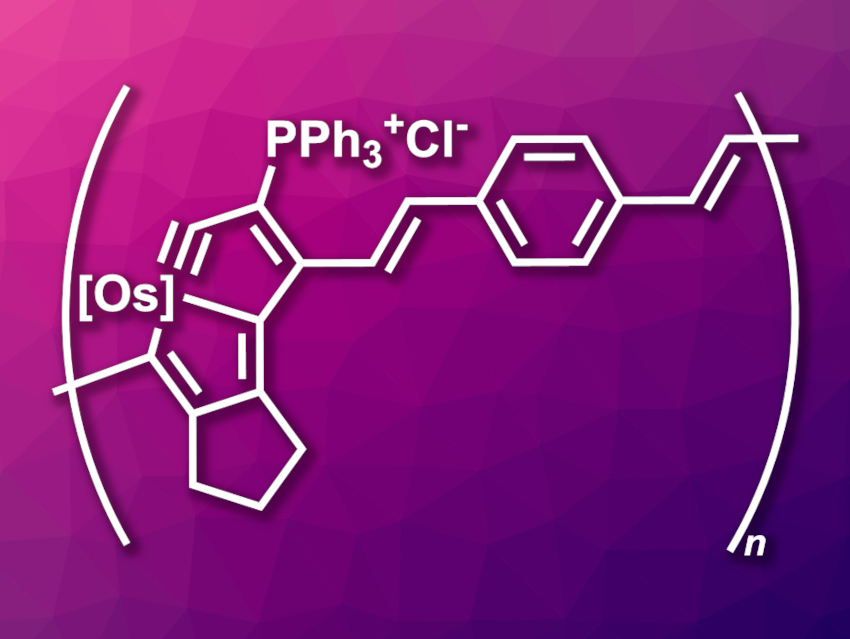Conjugated polymers feature alternating C–C single and double bonds along their backbone. The resulting system of delocalized electrons can lead to useful physical and chemical properties, with potential applications in, e.g., organic electronics. Aromatic and heteroaromatic compounds can be useful components of conjugated polymers. Metalla-aromatic compounds could also be interesting in this context, but had not been used as building blocks for conjugated polymers so far.
Haiping Xia, Xiamen University, China, and Southern University of Science and Technology, Shenzhen, China, and colleagues have prepared metalla-aromatic conjugated polymers (example pictured, [Os] = OsCl(PPh3)2) from monomers that feature a metallabicycle and a terminal alkyne, connected by different spacer groups. The team prepared the monomers using reactions of multiyne precursors with OsCl2(PPh3)3 and PPh3.
The resulting monomers were polymerized by treatment with HCl·Et2O in dichloromethane (DCM) at room temperature under an inert atmosphere. The resulting polymers show good solubility and broad and strong UV–Vis absorption bands. The team attributes the solubility to the bulky PPh3 substituents that prevent π–π stacking and the light absorption properties to the high degree of electron delocalization. According to the researchers, the materials might have applications in, e.g., catalysis or optoelectronics.
- Conjugated polymers based on metalla-aromatic building blocks,
Shiyan Chen, Lixia Peng, Yanan Liu, Xiang Gao, Ying Zhang, Chun Tang, Zhenghao Zhai, Liulin Yang, Weitai Wu, Xumin He, Liu Leo Liu, Feng He, Haiping Xia,
Proc. Natl. Acad. Sci. USA 2022.
https://doi.org/10.1073/pnas.2203701119

![Synthesis of [c2]Daisy Chains via Mechanochemistry](https://www.chemistryviews.org/wp-content/uploads/2025/04/202504_RotaxanesWithSolidStateMechanochemistry-125x94.png)


